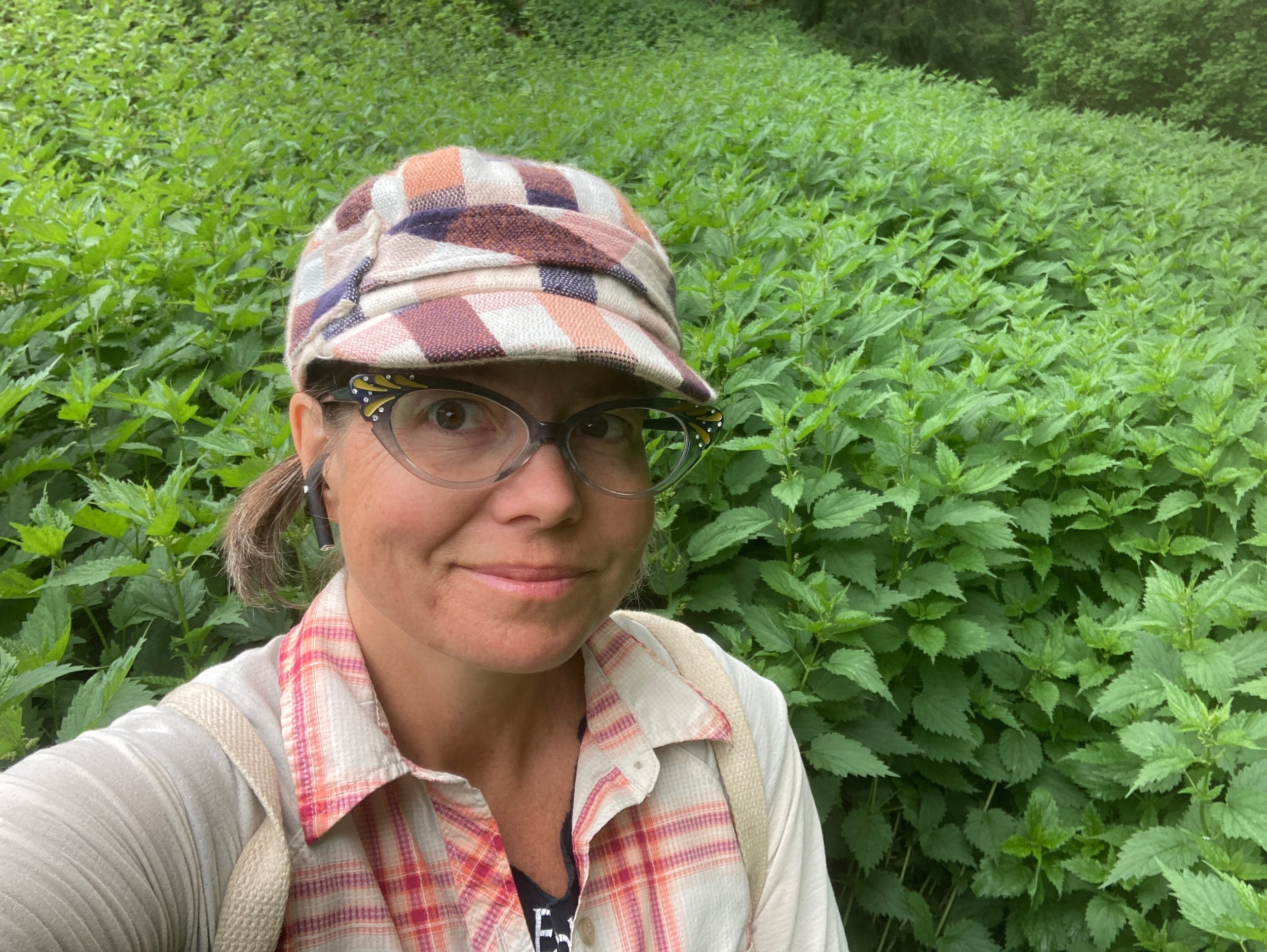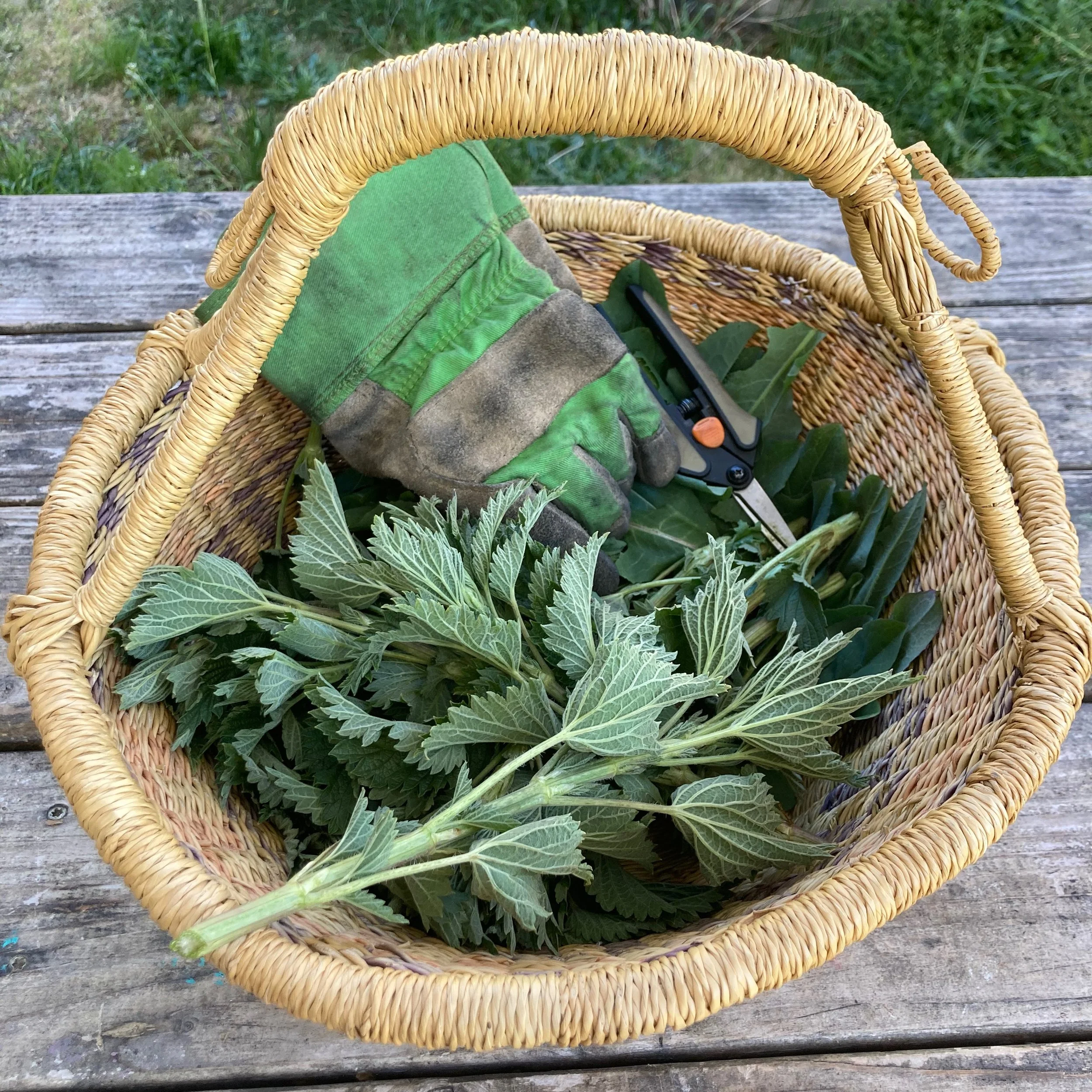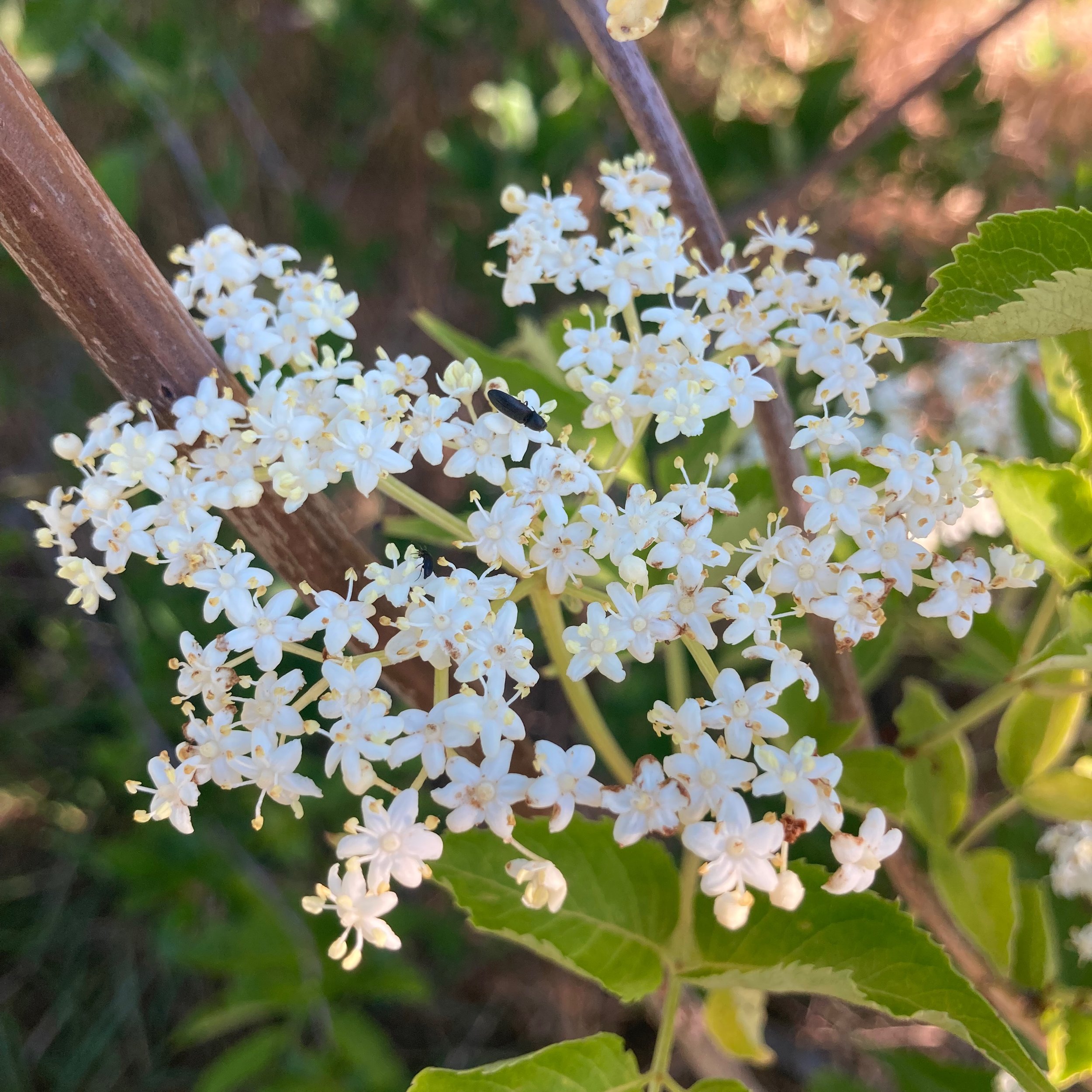Ahhh-Choo No More! Herbal Support for Allergy Season
Allergy Season Sale!
Nettles, Goldenrod, and Breathe Easy Tinctures are 20% off through April 1st!
Goldenrod Harvest, 2023
Well, loves, it’s about that time! You know, when the wildflowers are exploding and the grass is busting out all bright and green and our hearts just want to unfurl with it all… but then those pollen clouds fly into our faces and stuff up our heads and tamper the joy of the awakening earth. Wah.
We all know that over-the-counter meds can lesson the symptoms for a little while, but they are chock full of weird things and tend to be quite drowsifying. And nobody wants to be on that stuff for long… but the pollen doesn’t care. It just keeps doing its beautiful job of floating on the wind, spreading love and beauty everywhere it can! Including our sinuses.
And yet here’s the magic—while pollen, itself, can be super agitating, some of the flowers that blossom from it can help us breathe our way through allergy season with ease. Keep reading to learn more about three of our favorite wild herbs for managing the discomforts arising from pollen allergies: Stinging Nettle, Goldenrod, and Elder Flower.
Stinging Nettle (Urtica dioica)
Do you see how big that nettle patch is?!
One of the coolest things about Stinging Nettle is that it emerges at about the time when our eyes get itchy and heads get stuffy. Thank you, nettles! Nettles have traditionally been used as a full-body anti-histamine, helping to chill out the body’s elevated response to pollen particles, decreasing the frequency and intensity of sneezes and sinus headaches.
But that’s not all. Nettles are one of our greatest local superfoods! They are packed with vitamins and minerals, including silica and calcium, and are protein-rich. According to herbalist Scott Kloos, nettles help the body build blood, and strengthen lungs, nails, hair, and connective tissue. They are therefore excellent to take when healing from broken bones, strains, sprains, and surgeries. They also promote breast milk production and are excellent during all stages of pregnancy. In addition, Nettles tone and support the kidneys and adrenals. Rosemary Gladstar recommends that menopausal folks work with nettles to invigorate the adrenals in support of their hormonal changes.
Nettles can be ingested in many ways. They make a pleasant, mild-tasting tea made from fresh or dried nettles. They also make a delicious green for soups, pesto, “spanakopita”, or side dishes. I like to take a big bag of dried nettles on backpacking trips and throw them into every dinner to get my greens. If you want to work with them fresh, use gloves to strip the leaves off, then blanch them to deactivate the chemicals responsible for their sting.
We make a big batch of nettles tincture and nettle-infused apple-cider vinegar every spring. We take the tincture throughout the year as a whole-body tonic, and use the vinegar in place of plain ol’ ACV. We also add nettles to our Breathe Easy Respiratory Tonic.
If you have nettles growing near you (check by the creek or another wet spot), they should be springing up soon! I recommend wearing gloves, long pants, and long sleeves for the harvest. You can harvest good medicine from them until they begin to flower. Also, be sure to harvest nettles far from concentrations of heavy metals and chemicals, as they uptake and concentrate these compounds that are bad for your health.
We harvest our nettles along the creek running through our property every spring. It’s one of our first harvests and is thus filled with great joy! If you’d like to try some of our nettles, we’d love to share some with you in the form of tincture or organic apple-cider vinegar. And, just for fun, scroll to the bottom to watch a video of our 2023 nettles harvest.
Goldenrod (Solidago canadensis)
As an astringent plant, Goldenrod works as an excellent decongestant for the upper respiratory system and sinuses. It can be taken to clear up congestion caused by allergies, colds, or flu. I’ve taken it for both earaches and headaches and it’s done the trick. We put it in our Breathe Easy Blend because of its efficacy in clearing up the sinuses and relieving pressure-related pain. Taken alone or paired with cottonwood bud tincture, Goldenrod tea or tincture can provide great relief when you’re feeling stuffed up.
But wait, there’s more! Goldenrod is our go-to remedy for urinary tract and kidney issues. One winter when Seth had a UTI, he dosed himself a couple times a day with Goldenrod tincture, Madrone leaf tea, and unsweetened cranberry juice. A few weeks of this ritual took care of the UTI without necessitating antibiotics. Now he uses it at the first signs of imbalance and it reliably takes care of his discomfort!
Goldenrod tea or tincture is also great for digestion. It can stimulate digestive juices and help relieve gas and belly stagnation. Its drying nature also makes it a good remedy for diarrhea. We add it to our Root of Wellness Digestive Bitters for this reason.
Not only that, but goldenrod reduces inflammation and, taken internally, can help the body cleanse itself of waste products that lead to skin issues like acne, psoriasis, or eczema. Used externally as a wash made from tea or a salve, Goldenrod can help heal wounds, burns, and cuts.
If I’ve convinced you that you need some Goldenrod, you probably have some growing near you that you can harvest! It grows all over the country and, like many medicinal plants, Goldenrod can be found on land that needs healing—near roads, ditches, pastures, and other impacted environments. There are many many species of Goldenrod in the Solidago genus, and they all impart healing goodness.
It’s important to positively identify this plant correctly, for there are other highly toxic yellow flowers (particularly ragwort and groundsel) that beginning foragers may mistake for Goldenrod. Please do not collect this beauty for food or medicine unless you are absolutely certain that it is, indeed, Goldenrod!
If you want to make Goldenrod tincture, the best medicine will come from fresh plants. Follow this recipe to stock your home apothecary! Or get some from ours.
Elder Flower (Sambucus cerulea)
Early Spring Elder Flowers
Just about everyone knows about the immune-boosting awesomeness of elderberries these days. Yet elder flowers have yet to be celebrated on a broad scale as anything more than the foundation of St. Germain Liqueur. Both the berries and the flowers of Blue Elder are supportive for colds and flus. The berries are strongly antiviral and immune-activating, while the flowers have a particular affinity for the lungs. For this reason, we recommend the flowers for any health conditions that involve the bronchial system, including seasonal allergies.
In addition, they help to promote sweating and reduce fevers, dissolve phlegm throughout the body, and offer general respiratory support. They are a great addition to tea blends, and make a tasty tincture that can help reduce the length of flus and colds. Elder flowers are also edible. Some folks like to dunk them in batter and fry them up as fritters in the spring. How about an anti-allergen menu of elderflower fritters and nettles-kopita? Mmmmm.
Our local elder shrub is Blue Elder, or Sumbucus cerulea. We harvest the buttery-white, umbrella-shaped flowers in the spring and the plump purplish berries in the Siskiyou Mountains come late summer. If you’d like to try some of our elder flower tincture, you can find it in our Breathe Easy Blend.
Breathe Easy!
We’ve combined the superpowers of these featured plants into one simple blend. Our Breathe Easy Tincture can be taken as a daily tonic during cold and/or allergy season. We also use it as spring and summer roll into smoke season. And, as each of the herbs in this blend has a variety of supportive actions, it’s also a great one to grab if you feel a UTI coming on, have a headache, need digestive support, or feel the need for some deep nourishment.
And that’s all for today, my dears. Breathe well and be well.
xo Becca
Disclaimer
For educational purposes only. This information has not been evaluated by the Food and Drug Administration. This information is not intended to diagnose, treat, cure, or prevent any disease.





